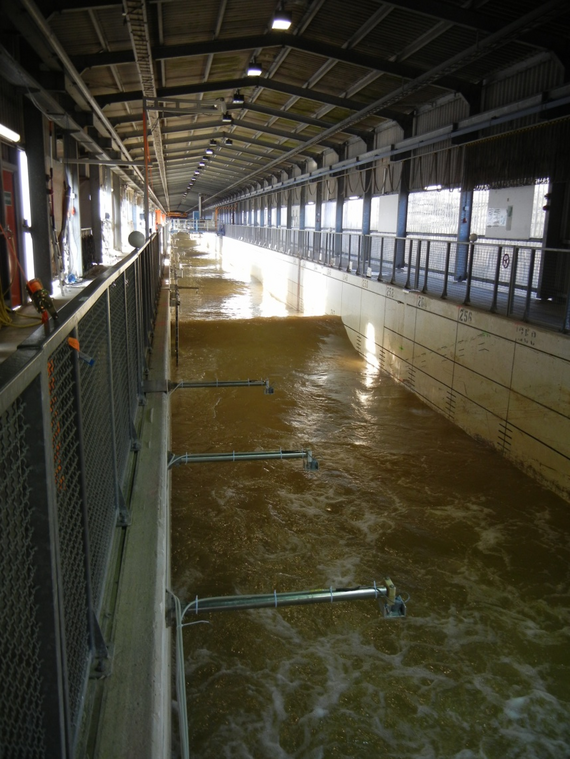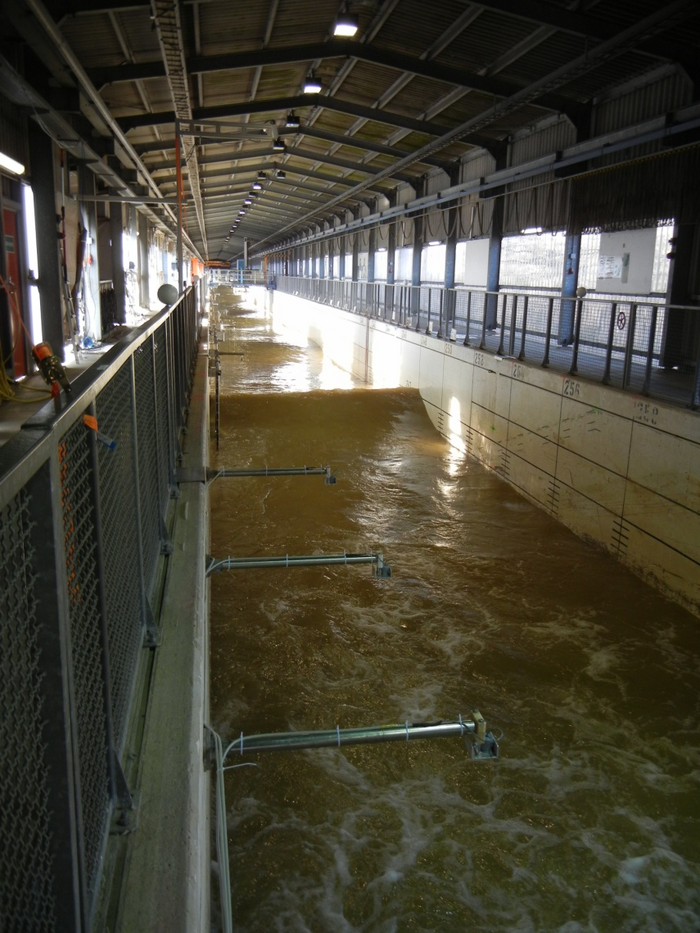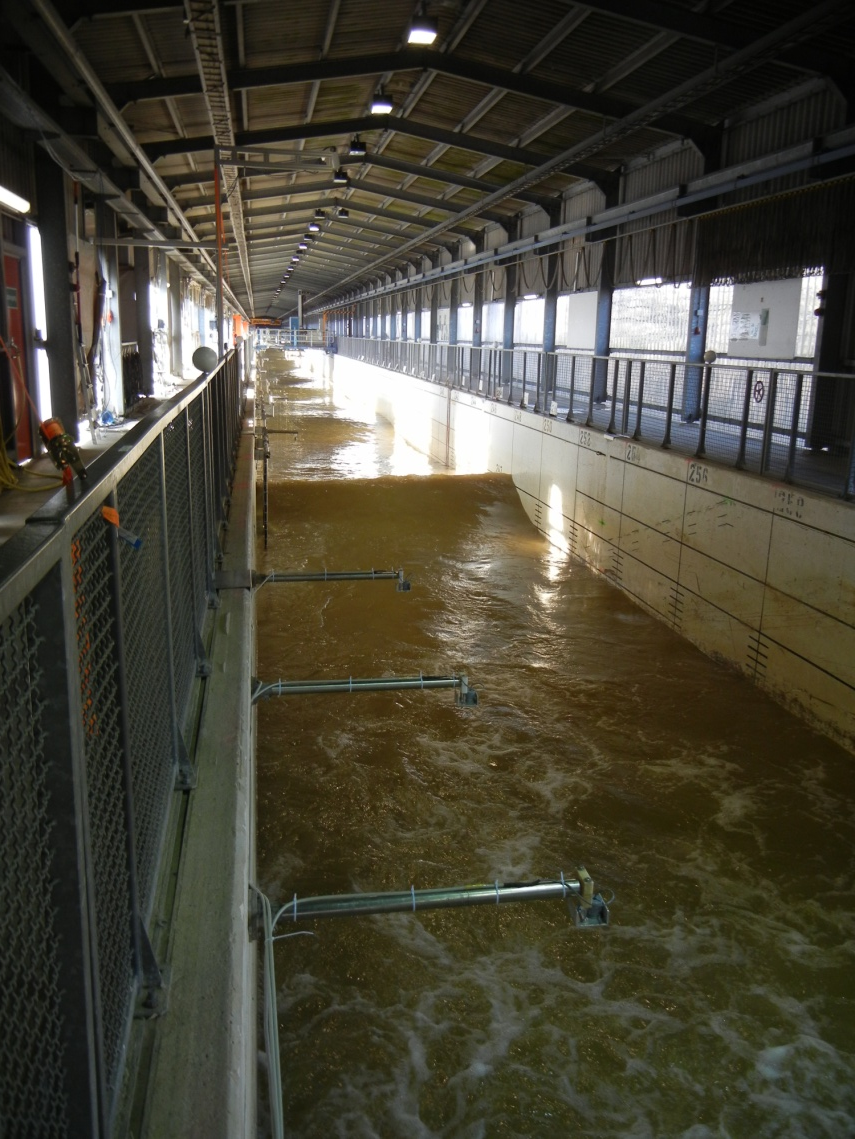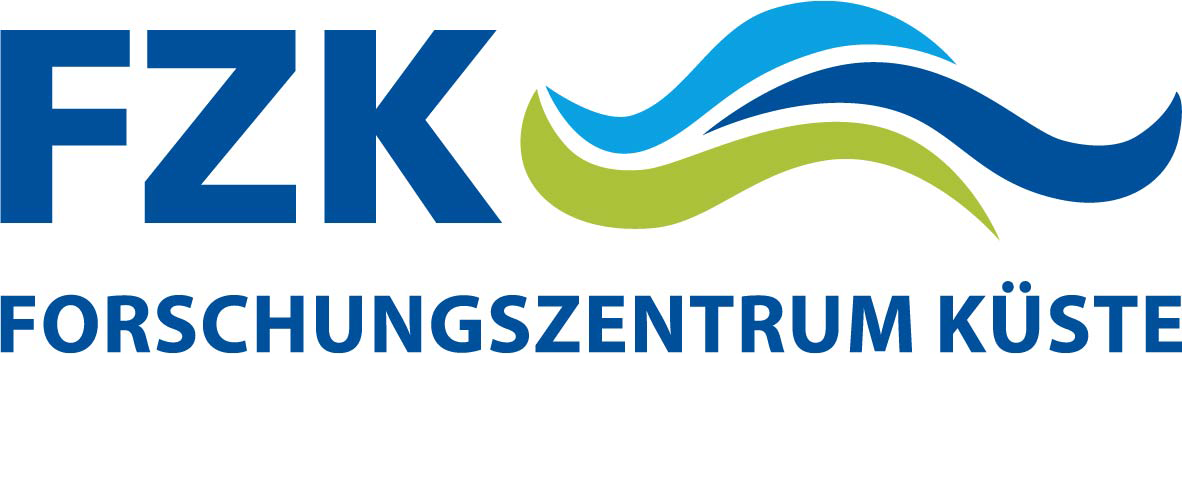WISE (HydralabIV)


 ©
Forschungszentrum Küste
©
Forschungszentrum Küste
| Leitung: | Dr.-Ing. Stefan Schimmels |
| Team: | Dr. Michalis Vousdoukas |
| Förderung: | EU (FP7) |
| Laufzeit: | Oktober 2010 - September 2014 |
WISE (Water-Interface-Sediment Experiments) is a Joint Research Activity within HYDRALAB IV and addresses sediment dynamics and its complexities which make accurate measurements difficult. The dynamic interactions at the interface between the overlying water and the seabed sediments, have a direct impact on almost all processes in coastal and inland waters; from the physical and chemical through to the biological and ecological. In spite of recent advances in numerical simulations and instrumental techniques, the field of sediment dynamics is still mostly based on semi-qualitative "knowledge" and has received limited research attention; particularly regarding the presently limited performance of sedimentary-bed hydraulic facilities. In fact, the same complexities which hinder measurements are at the core of modeling issues.
The aim of WISE is to observe the simultaneous and collocated profiles, of water and sediment flow and the associated bed-dynamics and particle features. The possibility to have a detailed picture of the flow field both in the horizontal and in the vertical direction is crucial for the correct understanding/quantification of fluid-sediment interactions, (e.g. generation and shedding of vortices). The aim, based on the advances achieved under Hydralab III are to (i) take the significant step of moving from classical one dimensional vertical profiles, 1DV, to quasi-3D resolution. Obtaining a number of vertical profiles over a horizontal transect is absolutely essential, if we are to understand dynamic sediment processes over biological and complex bedforms. And to (ii) extend opto-acoustic measurement capabilities currently limited to suspended sediments (developed under Hydralab III), to the highly concentrated nearbed layer usually identified as the bedload or sheet flow layer of primary importance for morphodynamics.
FZK contributed significantly to 2 tasks:
- Develop a new hybrid system, consisting of 2D/3D laser scanners and several video cameras, designed to monitor swash zone topographic change on a wave-by-wave basis. Apart from the hardware setup a methodology is proposed consisting of sensor calibration and several data processing steps, allowing a fusion of different sensors. Such an approach can improve the performance of several field/laboratory optical technique applications for nearshore hydro- and morpho-dynamic measurements.
- Improving the knowledge of the scaling effect under the total transport and suspended sediment regime. That was done through large-scale tests, under controlled and rough turbulent conditions, the results of which were compared with smaller scale experiments at the Barcelona (CIEM) and Lisbon (LNEC) wave flumes. The efforts were building upon experience gained on erosive conditions under HYDRALAB III and were now focused on Accretive conditions and include “identical” tests at complementary scales, carefully designed to study the effect of suspended and bed load modes when scaling a coastal "transect" (perpendicular to the shore section).
Publikationen
Vousdoukas, M.I. (2012): Erosion/accretion patterns and multiple beach cusp systems on a meso-tidal, steeply-sloping beach., Geomorphology, 141-142, 34-46.
Vousdoukas, M.I., Almeida, L.P., Ferreira, Ó. (2012): Beach erosion and recovery during consecutive storms at a steep-sloping, meso-tidal beach., Earth Surface Processes and Landforms, 37 (6): 583 - 691.
Vousdoukas, M.I., Kirupakaramoorthy T., de la Torre M., Wübbold F., Wagner W., Schimmels S., Oumeraci, H. (2014): The role of combined laser scanning and video techniques in monitoring wave-by-wave swash zone processes., Coastal Engineering, 83, 150-165.
Vousdoukas, M.I. (2014): Fusion of video cameras with laser range scanners- the coastal monitoring system of the future?, General assembly of European Geosciences Union, Geophysical Research Abstracts
Vousdoukas, M.I. (2014): High frequency monitoring of the swash zone using hybrid laser and video techniques, Proceedings of the 34th International Conference on Coastal Engineering (ICCE 2014), Seoul, Korea.
de la Torre, M.; Vousdoukas, M.; Schimmels, S.; Fernández, H.; Kirupakaramoorthy, T. (2014): Large scale tests of beach profile response sensitivity to the initial topography under erosive or accretive conditions., Proceedings of the IAHR Europe Congress, Porto, Portugal.








